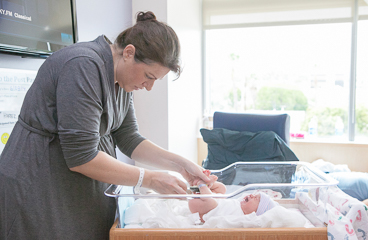
What is hypoglycemia in newborns?
Hypoglycemia is a low level of blood sugar. Sometimes babies have low blood sugar after they are born.
Babies who are born early (premature) have high energy needs. But they don't have a lot of energy stored up in their bodies. That's why they are more likely to have low blood sugar.
If a woman has diabetes when she becomes pregnant, she may give birth to a baby with low blood sugar. And some women get diabetes while they are pregnant. This also may lead to a baby born with low blood sugar.
If your blood sugar levels were high while you were pregnant, your baby's body will make more insulin after birth. Insulin is a normal hormone in the body that lowers blood sugar. The extra insulin may cause your baby's blood sugar to drop too low.
Diabetes during pregnancy can lead to other problems too. A baby can grow larger than normal before birth. This may cause problems during birth. With treatment, most women who have diabetes or get diabetes while pregnant are able to control their blood sugar and give birth to healthy babies.
Babies at high risk, such as ones who are born larger or smaller than expected, usually have their blood sugar checked. In most babies, blood sugar will return to a normal level. Feedings and other treatments can help the blood sugar level return to normal.
What are the symptoms?
Your baby may have symptoms such as:
- Shakiness.
- Not being active.
- Not feeding well.
- Breathing problems.
Many babies have few or no symptoms.
How is hypoglycemia in newborns treated?
The baby's blood sugar is usually checked by taking a drop of blood from the baby's foot. If the blood sugar is low, it will continue to be rechecked to see how well the treatment is working.
A baby with hypoglycemia will be fed more often. The baby may be given glucose (sugar) by glucose gel, rubbed inside the baby's cheek. Some babies may also be fed glucose through a tube. This is a tube that goes into the nose and down into the stomach. A tube that goes through a vein (I.V.) may be used if the baby has symptoms and the baby's low blood sugar is more severe.
Your doctor may do other tests to make sure that low blood sugar is not being caused by another problem, such as an infection.
Current as of: October 24, 2024
Author: Ignite Healthwise, LLC Staff
Clinical Review Board
All Ignite Healthwise, LLC education is reviewed by a team that includes physicians, nurses, advanced practitioners, registered dieticians, and other healthcare professionals.

